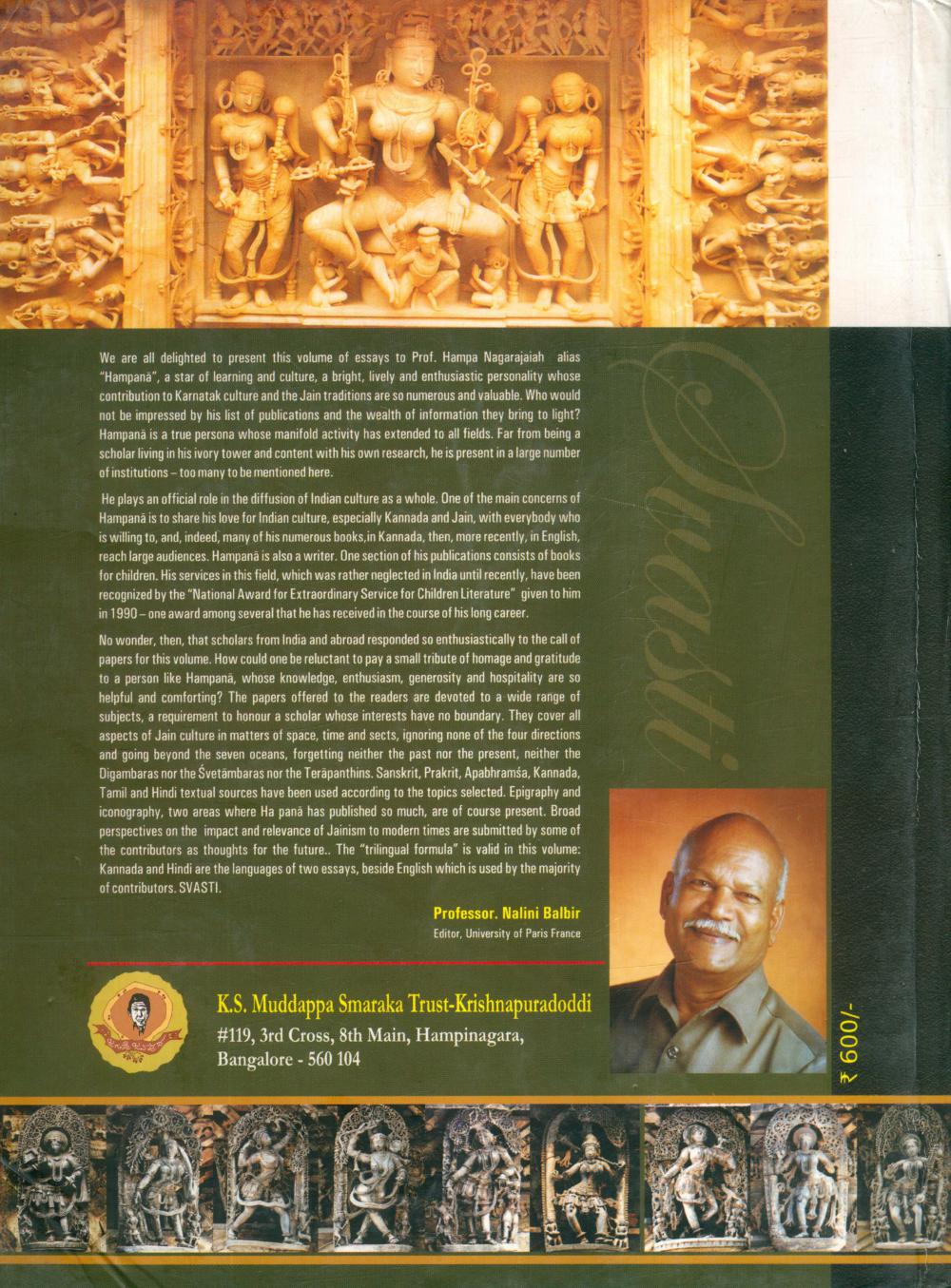________________ We are all delighted to present this volume of essays to Prof. Hampa Nagarajaiah alias "Hampana", a star of learning and culture, a bright, lively and enthusiastic personality whose contribution to Karnatak culture and the Jain traditions are so numerous and valuable. Who would not be impressed by his list of publications and the wealth of information they bring to light? Hampana is a true persona whose manifold activity has extended to all fields. Far from being a scholar living in his ivory tower and content with his own research, he is present in a large number of institutions - too many to be mentioned here. He plays an official role in the diffusion of Indian culture as a whole. One of the main concerns of Hampana is to share his love for Indian culture, especially Kannada and Jain, with everybody who is willing to, and, indeed, many of his numerous books, in Kannada, then, more recently, in English, reach large audiences. Hampana is also a writer. One section of his publications consists of books for children. His services in this field, which was rather neglected in India until recently, have been recognized by the "National Award for Extraordinary Service for Children Literature" given to him in 1990 - one award among several that he has received in the course of his long career. No wonder, then, that scholars from India and abroad responded so enthusiastically to the call of papers for this volume. How could one be reluctant to pay a small tribute of homage and gratitude to a person like Hampana, whose knowledge, enthusiasm, generosity and hospitality are so helpful and comforting? The papers offered to the readers are devoted to a wide range of subjects, a requirement to honour a scholar whose interests have no boundary. They cover all aspects of Jain culture in matters of space, time and sects, ignoring none of the four directions and going beyond the seven oceans, forgetting neither the past nor the present, neither the Digambaras nor the Svetarbaras nor the Terapanthins. Sanskrit, Prakrit, Apabhramsa, Kannada, Tamil and Hindi textual sources have been used according to the topics selected. Epigraphy and iconography, two areas where Ha pana has published so much, are of course present. Broad, perspectives on the impact and relevance of Jainism to modern times are submitted by some of the contributors as thoughts for the future.. The "trilingual formula" is valid in this volume: Kannada and Hindi are the languages of two essays, beside English which is used by the majority of contributors. SVASTI. Professor. Nalini Balbir Editor, University of Paris France K.S. Muddappa Smaraka Trust-Krishnapuradoddi #119, 3rd Cross, 8th Main, Hampinagara, Bangalore - 560 104 600/ ** *




